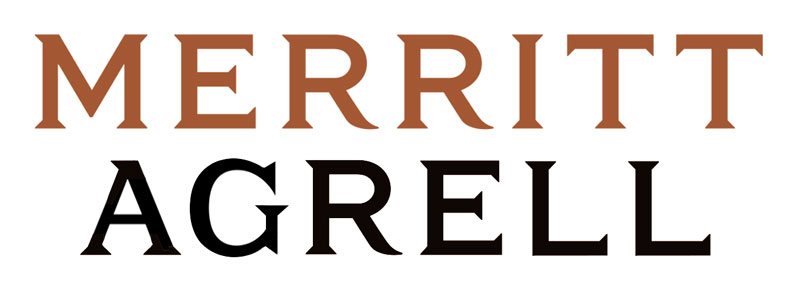In consulting, creating affinity is about connecting people to your ideas while developing a strong sense of commitment to the project. Among the many benefits of this is that we are compelled to be extremely thorough with our intent, communication, and the ramifications of ideas. This nearly guarantees that deeper connections are created for everyone involved.
Why strive for “Affinity,” and how is this different than any engagement1? The word affinity has an ease that is an extremely important part of our work that promotes higher quality client engagement. With this perspective and attitude, we continually experience deeper collaboration, greater results, and long-lasting professional relationships.
We’re using a brand identity project to illustrate the value of creating affinity in any process.
The new Agrell Architectural Carving wordmark and logomark would have been based on Merritt Woodwork’s – the parent company – brand guidelines. Merritt is deeply invested in their brand identity, and they weren’t looking for much more than adjusting their guidelines to work for Agrell. Soup Group felt that there was much more to consider if Agrell’s new identity was going to realize its full potential and have long-term benefits.
Merritt and Agrell employ very talented people with great ideas. Maximizing their involvement in the project gave us a greater understanding of each company’s goals, a deeper level of ownership, and the benefit of their native in-company experience and valuable ideas.

Rather than coming in with guns blazing, Soup Group wanted to slowly acclimate Merritt and Agrell to our design philosophy and creative process. We kicked off the project with six versions of a logotype, each using different but related typefaces. Each concept included notes on their brand expressions [1]. By creating a sort of continuum of type design with ‘old style’ typefaces at one end and ‘modern’ ones at the other, the stakeholders were able to understand the concept variants more thoroughly.
Each design review was followed up by an anonymous comments survey – respondents could enter their name if desired [2] – where stakeholders could openly critique and opine on the designs. This approach is very organic and allows people to say exactly what they think, but in doing so, they tend to be much more thoughtful about what they felt were the most, and least, Agrell-appropriate designs, and why.
The surveys, review meetings, and design mentoring within the concepts created a deeper stakeholder engagement, collaborative environment, and strong sense of ownership. Affinity for the designs, the project, and Soup Group were built as a result.
[1] What each typeface was defined by, evocative of, and how they aligned with the Agrell brand.
[2] By the second survey, names were being submitted with the surveys, an indicator of ownership.
Collectively, we loved Garamond Premier as the basis for the logotype and any customization. The Premier variant of Garamond is very much a ‘humanist’ typeface whose hand-drawn nature and organic structure speak directly to what Agrell does.
As a result of the close collaboration developed during the design sessions, we also provided a logomark for Social Marketing platforms and to be carved into their future work. This design was based on many sketches and close collaboration with Agrell’s founder and Master Woodcarver, Ian Agrell.
The affinity that was achieved in our process created a powerful collaborative relationship that drove the development of a brand identity which was far beyond Merritt and Agrell’s expectations.